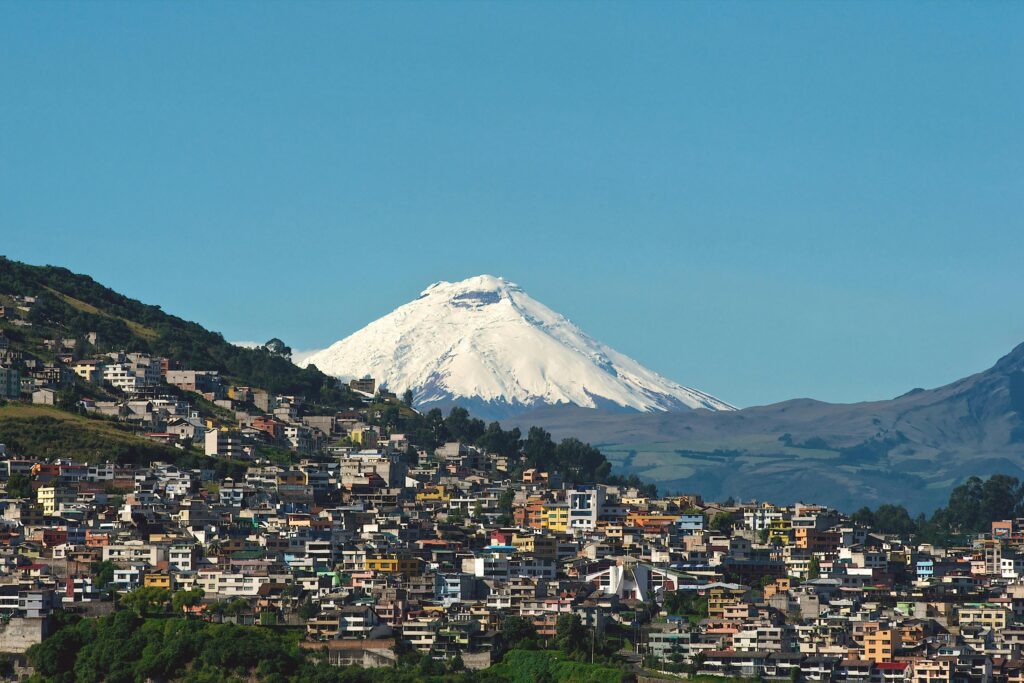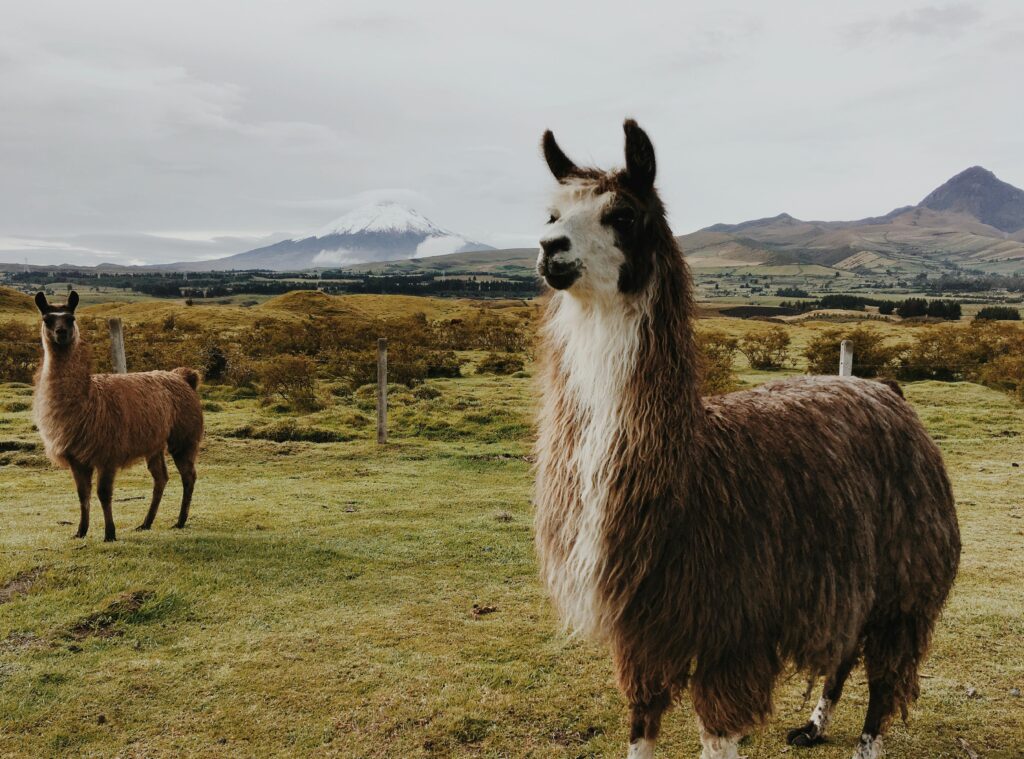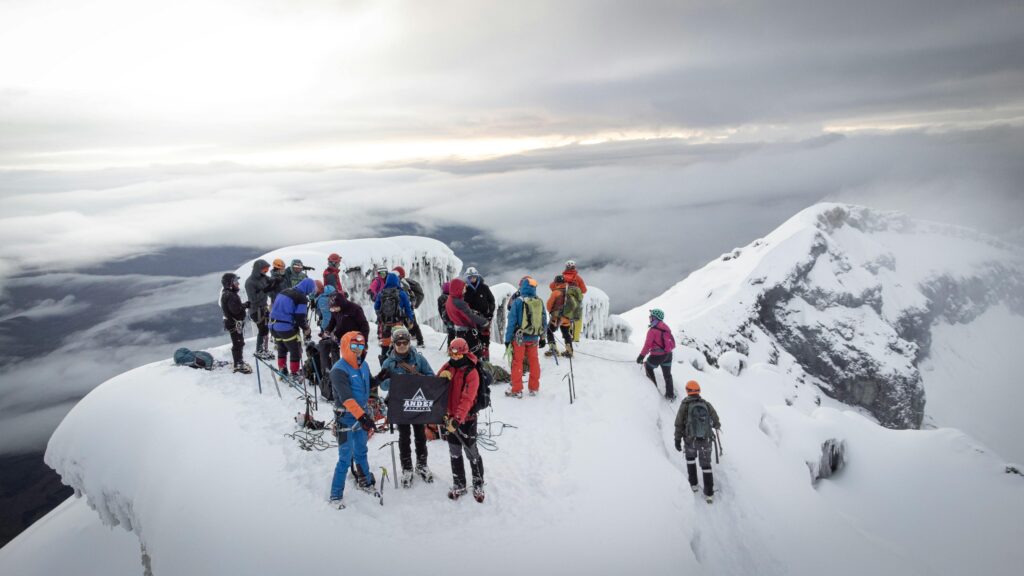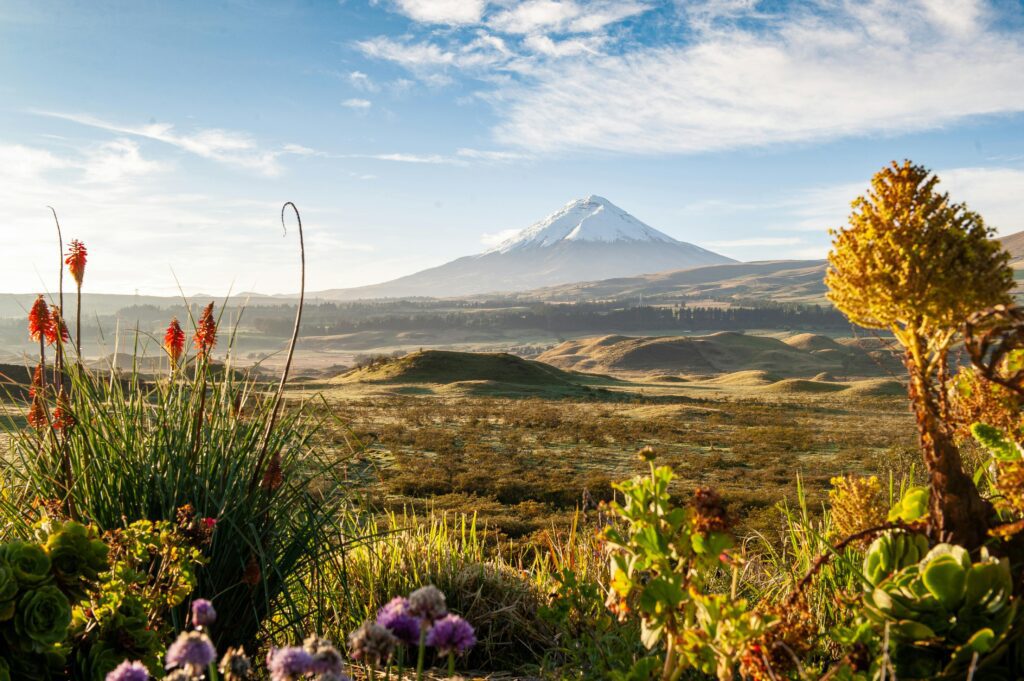Introduction
Cotopaxi National Park, a crown jewel of Ecuador’s Andean highlands, is a paradise for adventurers, nature lovers, and culture seekers. Home to the iconic Cotopaxi Volcano (one of the world’s highest active volcanoes), this UNESCO-listed park offers breathtaking landscapes, rare wildlife, and thrilling outdoor activities.
Standing at 5,897 meters (19,347 feet), Cotopaxi’s snow-capped peak dominates the horizon, while its surrounding páramo (high-altitude grasslands) teem with wild horses, llamas, and Andean condors. Whether you’re trekking to the Jose Rivas Refuge, mountain biking down volcanic slopes, or soaking in the crisp mountain air, Cotopaxi delivers an unforgettable experience.

In this best Cotopaxi National Park travel guide, we’ll cover:
– The best time to visit for optimal weather
– How to get there (transport options & costs)
– Top attractions & hidden gems
– A detailed 3-day Cotopaxi National Park itinerary
– Where to stay (luxury lodges vs. budget hostels)
– Local cuisine & cultural experiences
– Essential travel tips for first-timers
– FAQs (altitude sickness, permits, safety)
Ready to explore? Let’s dive in!
Best Time to Visit Cotopaxi National Park
Dry Season (June – September)
- Ideal for hiking & climbing – Clear skies, minimal rain, and stable temperatures.
- Peak tourist season – Book accommodations in advance.
- Cold mornings (near freezing) but sunny afternoons (10–15°C / 50–59°F).
Wet Season (October – May)
- Lush greenery & fewer crowds – Perfect for photography.
- Unpredictable weather – Afternoon fog and rain can obscure volcano views.
- Lower trekking accessibility – Trails may be muddy.
Pro Tip: For summit attempts, July–August offers the best conditions.
Personal Anecdote: During my visit in July, I woke at dawn to a sky so clear that Cotopaxi’s glacier gleamed pink under the sunrise. By noon, the páramo buzzed with hummingbirds, and the air smelled of wild mint—pure Andean magic.
How to Get to Cotopaxi National Park
From Quito (Most Common Route)
- By Car: 1.5–2 hours via the Pan-American Highway (rental car ≈ $30–$50/day).
- By Bus: Take a bus to Latacunga ($2–$3, 2 hours), then a taxi to the park entrance ($15–$20).
- Guided Tour: Many include transport (from $50–$150).
From Baños or Riobamba
- Private transfer (2–3 hours, $40–$60) or local buses with connections in Latacunga.
Insider Tip: If driving, use a 4×4—some roads are rough! The final stretch to José Rivas Refuge is a steep, rocky climb best tackled with high clearance.
Transport Cost Breakdown:
| Option | Cost (USD) | Duration | Notes |
|—————–|————|———–|——————————–|
| Rental Car | $30–$50 | 1.5–2 hrs | 4×4 recommended |
| Bus + Taxi | $17–$23 | 2.5 hrs | Cheapest but slower |
| Private Tour | $50–$150 | Full-day | Includes guide & activities |
Top Attractions in Cotopaxi National Park
1. Cotopaxi Volcano Summit (5,897m)
- For experienced climbers only – Requires a guide, crampons, and acclimatization.
- Base camp at José Rivas Refuge (4,864m) – A must-visit even if not summiting. The refuge serves hot meals and offers bunk beds ($20/night).
Climb Details:
– Duration: 6–8 hours to summit (start at midnight for sunrise views).
– Cost: $200–$400 (includes guide, gear, and permits).
2. Limpiopungo Lagoon
- Easy 2.5km loop trail – Spot Andean gulls, wild horses, and (if lucky) condors.
- Photography hotspot – Mirror-like waters reflect Cotopaxi perfectly at sunrise.
Hidden Gem: Walk 10 minutes beyond the lagoon to Paso de la Virgen, a secluded viewpoint with 360° vistas.

3. Sincholagua Volcano (4,899m)
- Less crowded but equally stunning – Great for intermediate hikers.
- Trailhead: Access via the northern park entrance (less touristy).
4. Mountain Biking Down Cotopaxi
- Thrilling 20km descent – Tours include bike rentals (from $60).
- Route: Starts at the refuge, winds through páramo, ends near Limpiopungo.
Sensory Moment: The wind roared in my ears as I sped downhill, the scent of volcanic soil mixing with the crisp mountain air.
Where to Stay Near Cotopaxi National Park
Luxury Lodges
- Tambopaxi Lodge – Eco-friendly, volcano-facing rooms ($120–$200/night). Signature perk: Glass-walled dining room with Cotopaxi views.
- Hacienda El Porvenir – Authentic ranch with horseback riding ($150+). Try their “Chagra Breakfast” (local cheese, eggs, and fresh bread).
Budget Options
- Secret Garden Cotopaxi – Backpacker-friendly, includes meals ($25–$50/night). Bonus: Nightly bonfires with marshmallows.
- Camping – Free near Limpiopungo (bring a -10°C sleeping bag!).
Book Ahead: Lodges fill quickly in peak season!
Local Cuisine & Cultural Experiences
Must-Try Foods
- Locro de Papa – Creamy potato soup with avocado & cheese. Best spot: Hacienda San Agustín de Callo (near the park).
- Cuy (Guinea Pig) – A traditional Andean delicacy (try it roasted at El Rincon de Cantuña in Latacunga).
Personal Anecdote: I stumbled upon a local mercado in Latacunga, where a vendor handed me a steaming empanada de viento (fried cheese empanada). Crispy outside, gooey inside—pure bliss!
Cultural Highlights
- Visit a Hacienda – Hacienda Los Mortiños offers weaving workshops with indigenous artisans.
- Indigenous Markets – Otavalo’s textile markets (2.5 hours away) are worth the detour.
Detailed 3-Day Cotopaxi National Park Itinerary
Day 1: Acclimatization & Exploration
Morning:
– 6:30 AM: Arrive at Limpiopungo Lagoon. Walk the loop trail, watching for wild horses.
– 9:00 AM: Breakfast at Tambopaxi Lodge (try their quinoa pancakes).
Afternoon:
– 12:00 PM: Drive to José Rivas Refuge. Hike 1 hour to the glacier line (4,800m).
– 3:00 PM: Sip coca tea at the refuge while chatting with climbers.
Evening:
– 6:00 PM: Stargaze at Tambopaxi—the Milky Way is visible on clear nights.
Day 2: Adventure Day

Morning:
– Option A: Summit Cotopaxi (start at midnight, return by noon).
– Option B: Bike tour (9:00 AM–12:00 PM).
Afternoon:
– 2:00 PM: Soak in Termas de Papallacta hot springs (1.5-hour drive).
Evening:
– 7:00 PM: Dinner at Hacienda El Porvenir (order the seco de chivo, a goat stew).
Day 3: Culture & Departure
Morning:
– 8:00 AM: Explore Latacunga’s Saturday market (best for textiles and fresh fruit).
Afternoon:
– 12:00 PM: Return to Quito or continue to Quilotoa Crater Lake.
Download our free Cotopaxi National Park map for trail details!
Travel Tips for Cotopaxi National Park
✔ Altitude sickness prevention – Spend a day in Quito first.
✔ Pack layers – Temperatures swing from freezing to warm.
✔ Cash only – Few ATMs in the park.
✔ Guides required for summit climbs.
Pro Tip: Rent a gas stove if camping—fires are prohibited!
Frequently Asked Questions (FAQs)
1. Do I need a permit to enter Cotopaxi National Park?
No, but climbing Cotopaxi requires a certified guide. Permits are arranged through tour operators.
2. Is Cotopaxi safe for solo travelers?
Yes, but hike with a buddy—weather changes fast. Trails are well-marked, but fog can reduce visibility.
3. What’s the best way to avoid altitude sickness?
- Hydrate well (3–4 liters/day).
- Ascend slowly (spend a night at 3,000m+ before hiking).
- Chew coca leaves (legal in Ecuador) or take Diamox (consult a doctor).
4. Can I visit Cotopaxi in one day?
Yes! A day trip from Quito covers Limpiopungo & the refuge. Leave by 6:00 AM to maximize time.
5. Are there ATMs in the park?
No—bring cash (USD) for entry fees ($10–$15) and snacks.
6. What wildlife can I see?
Andean condors, foxes, and spectacled bears (rare but possible in remote areas).
7. Is camping allowed anywhere?
Only in designated zones (e.g., near Limpiopungo). No wild camping to protect the páramo.
Conclusion: Start Your Cotopaxi Adventure Today!
Cotopaxi National Park is a must-visit for anyone exploring Ecuador. Whether you’re summiting the volcano, biking through páramo, or savoring local cuisine, this park offers unmatched adventure.
Keywords: Best Cotopaxi National Park travel guide, 3-day Cotopaxi National Park itinerary, Cotopaxi National Park backpacking tips, Cotopaxi National Park tourism, José Rivas Refuge, Limpiopungo Lagoon, Cotopaxi Volcano climb.



